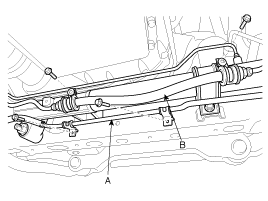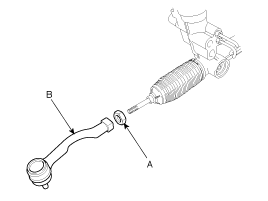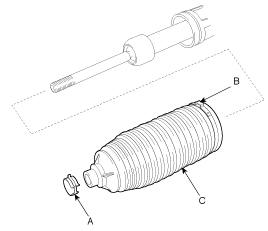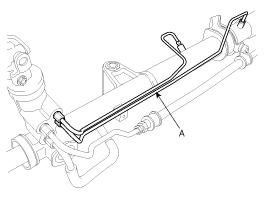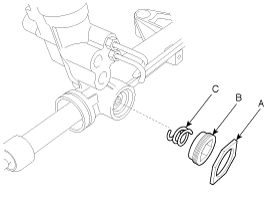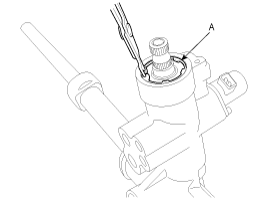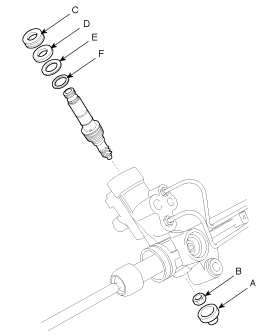Remove the tie rod end ball joint (C) from the knuckle by using the SST (09568-4A000).
Remove the split pin (A).
Remove the castle nut (B).
Use the SST (09568-4A000).
Tightening torque :
58.8~78.4N.m (6.0~8.0Kgf.m, 43.3~57.8lb.ft)
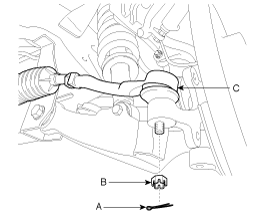
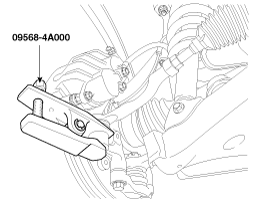
When using SST, be sure not to damage the dust cover of lower arm ball joint.
Keep SST tied to the car because there is a risk of injury by dropping the SST during removing the lower arm ball joint.
The peripheral parts may be damaged when removing the lower arm ball joint with a general tool such as lever, so be sure to use SST.
